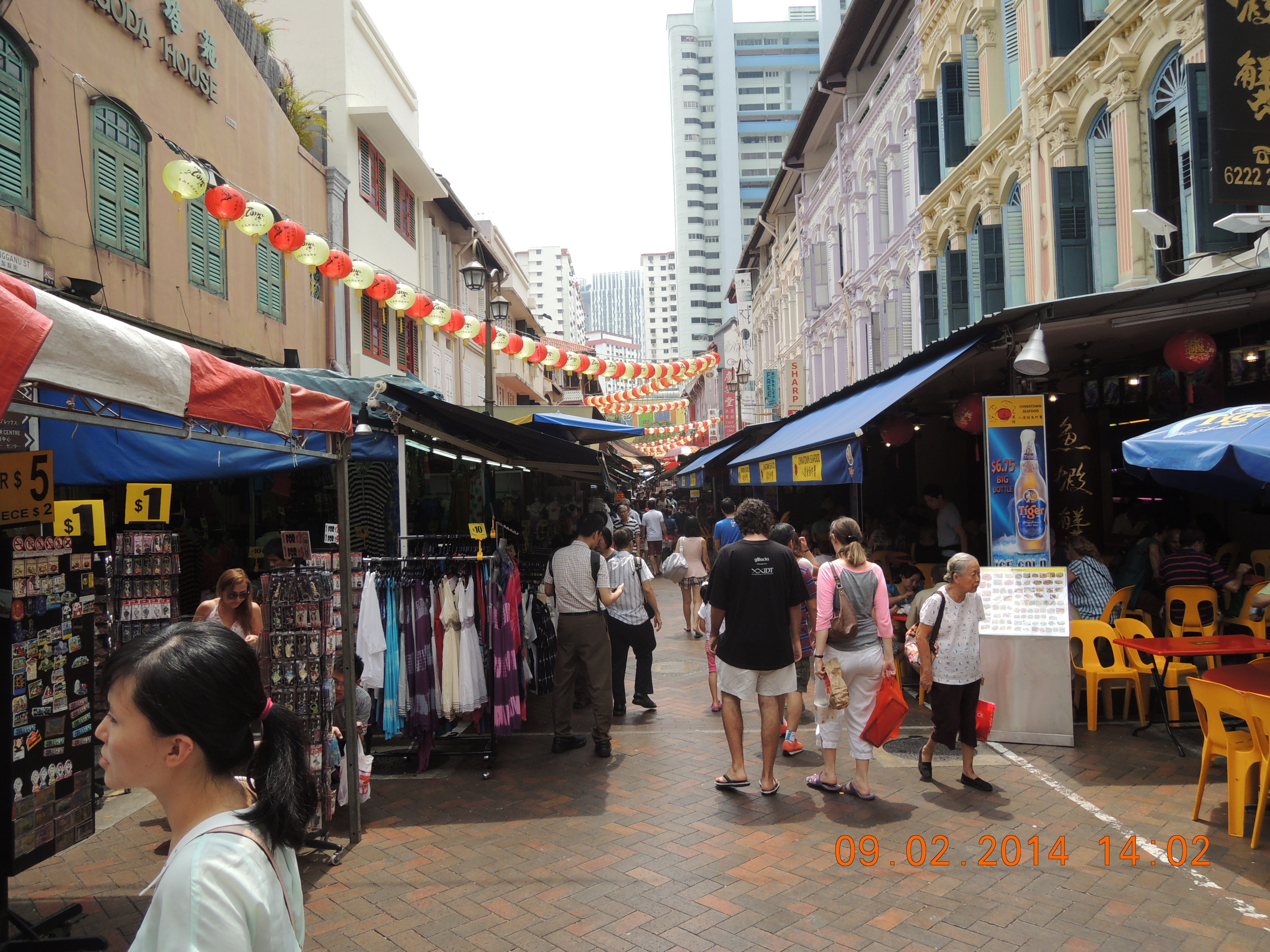My favorite place to go in Singapore is Chinatown. It’s a short walk, a short bus ride, then a short metro trip from my home. Though some hours of the day are less crowded than others, even the quiet times are hopping in Chinatown. It’s a great place to people-watch. Tourists are always fun with their bewildered expressions and cameras cradled in their hands. When a cruise ship is in town the people in its tour group wear matching stickers on their shirts. Sometimes a school group will come through. A field trip to Chinatown—how fun! The kids wear backpacks and stumble over their long feet. The vendors tend to be cynical—why should the woman sell me the fake antique teapot for ten dollars when someone’ll come along shortly who’ll pay the twenty-five she’s asking, though she and I both know she didn’t pay three bucks for it. In Chinatown it’s all about profit.
Chinatown has everything a Chinese person could need—and I find it fascinating to see what other cultures regard as necessity. There’s a hawker center for an inexpensive meal, but be careful what you order because if you ask for pork you may get tripe, and fish stew could mean fish eyes floating in your bowl. Also, there’s a wet market for fresh produce and meat. The produce is often unfamiliar, but the woman behind the counter is happy to tell you what it is and how to prepare it. The reason it’s called a wet market is because animals are slaughtered here, and fish are cleaned here, and at the end of the day the vendors hose the place down, washing the whole gooey mess down the drain in the center of the floor.
Out on the streets what look like stalls turn out to be deep shops. Red paper lanterns bop the taller customers on their heads as they pass beneath and between awnings. Clothes stores offer inexpensive lightweight shirts and skirts from India, Thailand, Viet Nam, and China. Tea shops are stacked from floor to ceiling and back to front with yellow, red, and green canisters. Apothecaries sell Chinese remedies like Tiger Balm, Ma Huang Tang (cure for a wind cold), and white flower oil. Handbags, jewelry, calligraphy brushes, Mahjong sets, pashminas, chopsticks, wooden combs—all are on display, along with more cheap souvenirs than a sane person would ever want.
My favorite area is the fabric market. Walk past the man who repairs shoes on the curb, beyond the juice stand, and up the escalator that never works. Up here are two low-ceilinged hallways lined with shops that are stuffed with rolls of richly colored fabric. Chest-high bolts fall from the shops, leaning on each other, and blocking the walkway. A couple of shops specialize only in men’s shirt fabric. Several hold only material for women’s formal wear—transparent or heavy silk, and lace. The proprietors who sell cotton know me and I know them. When they see me coming they rush out, calling me “Madam, come see our new, come see our new.” They point out their latest goods, which are always Japanese and more expensive than any of the other cotton. Though all the stalls have the same fabric because it all comes from the same places and it was all brought in on the same boat, I always spread the money around, carefully buying a meter from this one, a meter from that one, a meter from another one. They all know when I’m starting a new quilt.
Welcome, Year of the Horse. And horses are everywhere in Chinatown.
Doesn't this look like fun?
Here's a quilt I made from fabric I bought in Chinatown.




